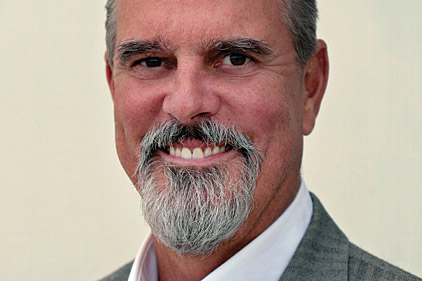 A recent study by Ceres, “Practicing Risk-Aware Electricity Regulation: What Every State Regulator Needs to Know,” concluded that the least cost and least risk for future energy resources is energy efficiency. Indeed, the lowest cost unit of energy is one that is not used.
A recent study by Ceres, “Practicing Risk-Aware Electricity Regulation: What Every State Regulator Needs to Know,” concluded that the least cost and least risk for future energy resources is energy efficiency. Indeed, the lowest cost unit of energy is one that is not used.
Energy Gluttons
According to the U.S. Department of Energy (DOE), buildings are the largest single sector of energy consumption nationwide. Indeed, the building sector accounted for a whopping 41 percent of primary energy use in 2010. The buildings sector consumes approximately one-third more energy than either the industrial or transportation sectors. And since 60 percent of energy used in buildings is for thermal loads, some 24 percent of all energy used in the nation is for space heating, cooling, and water heating.
A unique renewable-energy technology with vast potential for energy efficiency and savings stands ready to assist architects, engineers, developers, builders, facilities managers, and homeowners dramatically reduce the thermal energy demands of buildings. That technology is the ground-source or geothermal heat pump (GHP).
Slashing Energy Use
GHPs are an efficient, green alternative to traditional heating and air conditioning equipment, offering significant environmental, economic, and societal benefits. Using a concept called geothermal exchange, they tap the clean energy of the sun naturally stored in the near-surface of the earth, transferring this free heat to buildings in winter and back to the ground in summer.
They work by circulating water through a closed loop of durable, high-density polyethylene pipe installed either horizontally or vertically in the ground beside or even beneath a building. During the winter, GHPs transfer heat energy from the ground to buildings for warmth. In the summer, they provide cooling by rejecting unwanted heat from buildings back to the earth, while providing free hot water. This simple, renewable-energy concept has profound energy-efficiency, cost, and environmental implications.
According to the U.S. Environmental Protection Agency (EPA), “Geothermal heat pumps are among the most efficient and comfortable heating and cooling technologies currently available.”
Producing Negawatts
A typical 3-ton residential GHP can reduce summer peak electricity demand by approximately 2 kW. Imagine 500 homes equipped with GHPs. The reduction in peak-power demand results in the savings of a MW. That’s a MW of electricity not used, which creates what some energy experts around the world have labeled a Negawatt, following the lead of famed environmentalist and Rocky Mountain Institute founder Amory Lovins, who coined the term more than two decades ago.
The idea of a Negawatt is cutting electricity consumption without necessarily reducing energy usage through energy efficiency. And, given their efficiencies, one of the best ways to get there is to promote and install more GHPs across electrical power service territories.
Lovins said it best: “There isn’t any demand for electricity for its own sake. What people want is the service it provides. … Nonetheless, most of our utilities have gotten into the habit of thinking they’re in the kWh business, so they should sell more. … For some reason, it’s hard for them to get used to the idea that it’s perfectly all right to sell less electricity, and thus bring in less revenue, as long as costs go down more than revenues do.”
Embracing GHPs
GHPs produce Negawatts, which have a higher value than any MW of costly power generation. Because of their technology, GHPs produce the thermal equivalent of a Negawatt at a fraction of installation costs compared to a MW of electricity produced by any renewable power source like wind, solar, and biomass. And that doesn’t take into consideration the fact that GHPs avoid the need for expensive transmission lines required by power plants, whether it’s renewable-, fossil-, or nuclear-powered.
By providing essentially free renewable energy from the earth, GHPs can work wonders in lightening the load on our oft-strained electrical grid. This is especially true for those sweltering days with looming blackouts when consumer demand soars and power generation is maxed out. For electric utilities, geothermal heating and cooling reduces summer peak demand and actually builds load (and power sales) in the winter, while providing comfort levels that foster happy customers.
Another benefit of GHPs is carbon-emission reduction. This is an especially important policy consideration as concerns grow about climate change caused by burning fossil fuels to produce electricity. According to Oak Ridge National Laboratory, 1 ton of GHP capacity over a 20-year operating cycle avoids CO2 emissions of 21 metric tonnes. Therefore, 1,000 homes would reduce carbon emissions by 63,000 metric tonnes over 20 years.
Promoting GHPs
Thirty states and the District of Columbia have enforceable Renewable Energy Portfolio Standards (REPS) that mandate a minimum share of electricity offered by utilities comes from specified renewable resources. As of the start of 2013, only two of those states include the thermal load avoided by GHPs as renewable. All the others have definitions of renewable that state “energy generated” and exclude the term “thermal load avoided.”
States with REPS need to recognize the value of Negawatts and amend their standards to include the thermal load avoided by GHPs. Utilities should be allowed to receive credit for Negawatts, and in turn they should offer financial incentives for the installation of GHPs by their customers.
The socioeconomic benefits of producing Negawatts are too many to list here. Homeowners spend a majority of their energy costs to heat, cool, and produce hot water. A GHP can significantly cut that cost, and at the same time yield more disposable income. Innovative dealer payment options and utility on-bill financing programs can actually reduce monthly energy outlays while paying for GHP systems on the installment plan.
The Kaiser Foundation, Tulsa, Okla., financially supports the installation of GHPs in Habitat for Humanity homes in an effort to help break the cycle of poverty through energy efficiency. The average energy cost for such homes is less than $1 a day. Both residential consumers and business owners alike can save energy and increase their bottom lines by utilizing GHP technologies.
The GHP industry supports job growth by employing people working in factories and completing installations. This includes a nationwide network of drillers, drill-rig equipment providers, and pipe-and-grout manufacturing workers, to name a few. Negawatts generated by GHP installations create thousands of jobs right here in the U.S.
Our ability to use the earth for geothermal energy exchange is limitless. The technology is waiting to be used, and it’s proven to be the most energy-efficient means to satisfy the thermal loads of buildings. Their geothermal exchange of renewable energy from the earth produces Negawatts, the cheapest units of energy produced and consumed. We must forge new public policies that recognize this fact, for the benefit of the environment, our economy, and the nation.
Publication date: 6/24/2013
Want more HVAC industry news and information? Join The NEWS on Facebook, Twitter, and LinkedIn today!



Report Abusive Comment